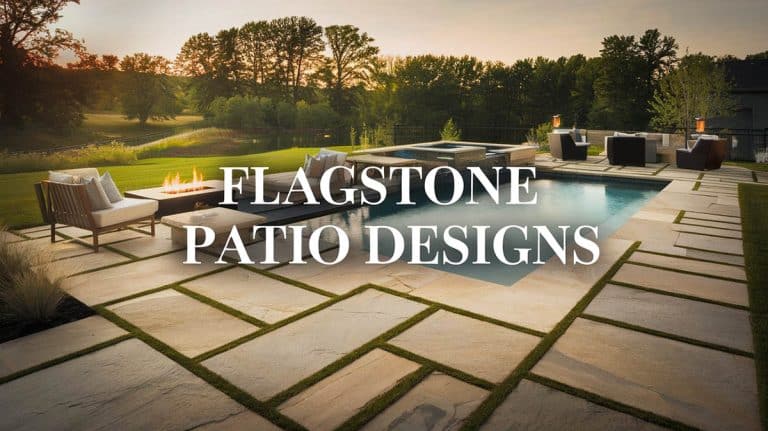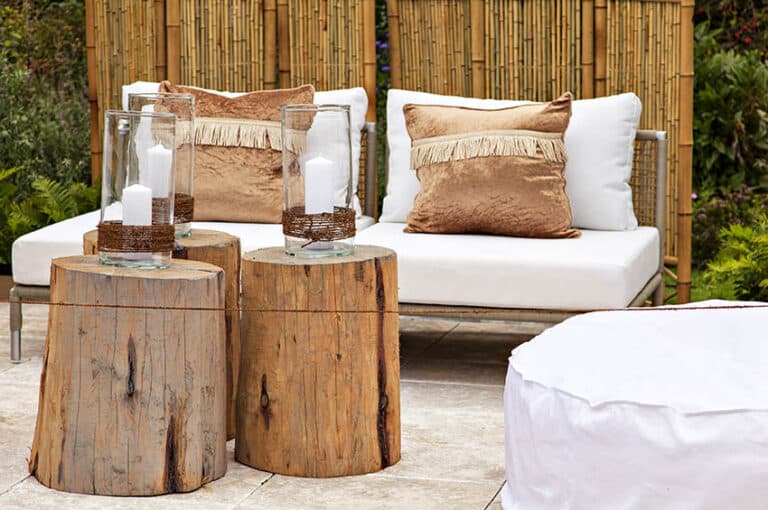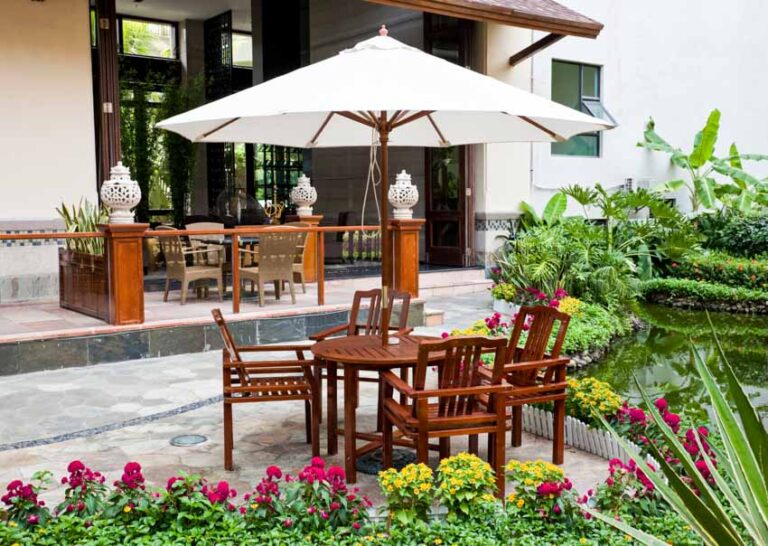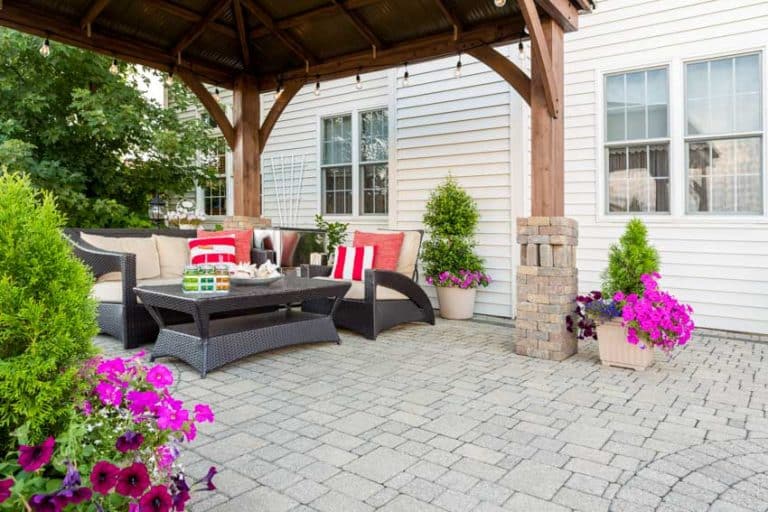Pressure Treated Wood Deck (Types & Grades)
See if a pressure treated wood deck is a good choice for outdoor decks, with the different types of pressure treated decking, wood grades, and pros and cons.

Whether you are just starting on building a new deck or you’re considering replacing your old one, you will surely come across pressure-treated lumber. It will be one of the materials you will need if you are considering having this type of structure.
Pressure treated wood decking refers to when the wood is subject to treatment via vacuum and pressure technology, enabling preservatives to be integrated deeper into the grains.
This technology is used during the manufacturing process in an effort to create a material that possesses all the characteristics and features you would want in this outdoor structure. The material produced has better resistance to physical damage, fungal decay, insects, moisture, and rotting.
With all of these in mind, a pressure treated wood deck seems like a dream come true for many homeowners. If you are also considering building one in your home, learning everything you can first about this kind of deck is necessary before making a decision.
Is Pressure Treated Wood Good For Decks
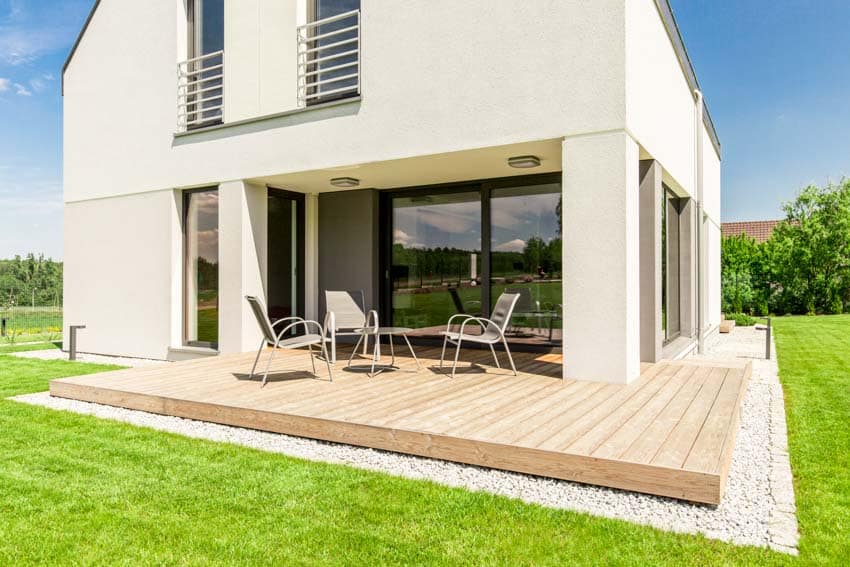
With this material though, since the material is improved to be resistant to harmful elements like moisture and insects, being exposed to them won’t be an issue that will worry you.
And this is only one factor that makes this material a good choice for this structure. You can further explore other benefits that can support this by checking out its pros and cons.
Types Of Pressure Treated Wood For Decks
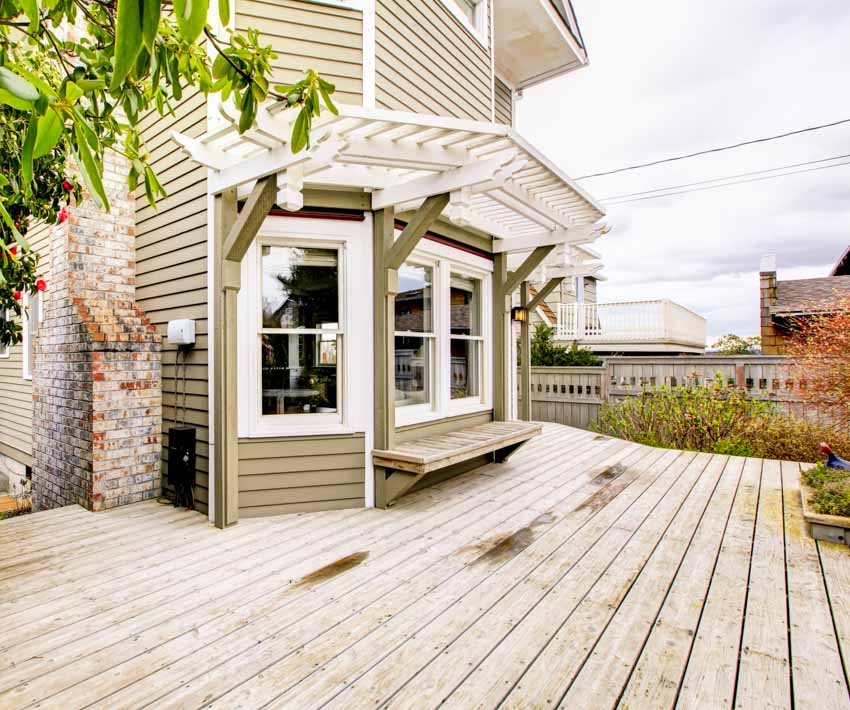
When checking out the different types you can consider for backyard decks, there are different elements that group them into different types.
They can be grouped on the chemicals used on the wood for treatment, the species used, and other ratings and classifications that are important in this material.
Based On Chemical Treatment
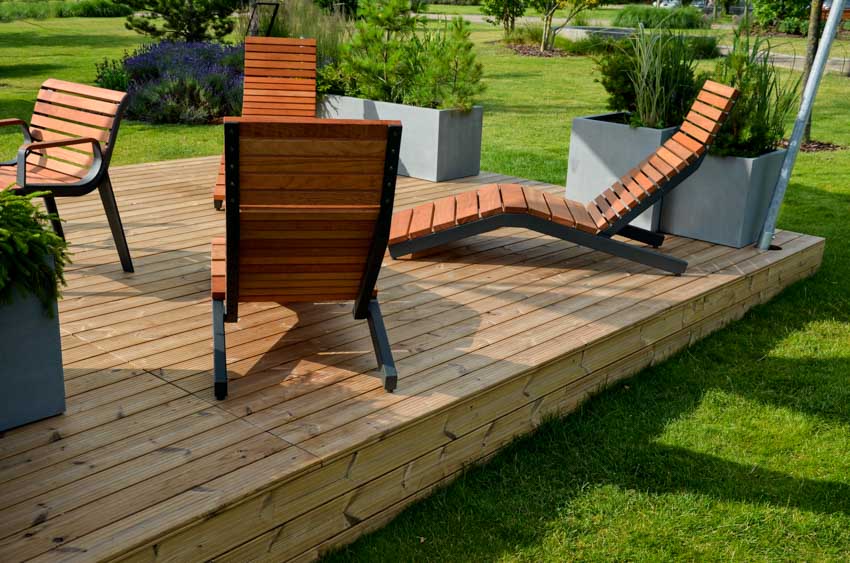
Pressure treated wood usually comes in the form of lumber of fir, spruce, or pine, depending on the species you chose. While they have high availability, many of these species are not rot-resistant in their natural states, which is why treatment plays an important role in its improving their capability.
Some of the chemicals usually applied in the treatment of this material the following:
• ACQ or Ammonia Copper Quaternary (Most common)
• CA or Copper Azole
• MCQ or Micronized Copper Quaternary
• MCA or Micronized Copper Azole
In the past, CCA or Copper Arsenate treatment was popular and common but the use of toxic chemicals chromium and arsenic gave the entire niche a bad reputation which is why it was phased out in the 2000s, particularly for residential use in North America.
The rest of the chemicals and treatments are the results of years of scientific advancements in search of less toxic substitutes. ACQ does not contain chromium or arsenic and is a water-based treatment ensuring less toxicity in the process. The micronized versions are also examples of the products of these advancements, producing a material that has less potential corrosion to fasteners.
When you choose pressure treated lumber, just look for the label that comes with it. The label will normally include the type of chemicals used for the treatment of the wood and the ideal usage rating of whether it is for above-ground use or ground contact.
Based On The Wood Species

Another classification of pressure treated wood to consider is the wood species, and there are several that are worth taking note of, including the following:
• Southern Yellow Pine: Most common in the eastern U.S., this species is a dense and strong softwood that holds screws, fasteners, and nails really well and has a grain cellular structure that allows deep and uniform chemical penetration.
• Spruce, Pine, & Fir Mix: Popular in the northern U.S. and central and eastern Canada, this mix is less durable than the Southern Yellow Pine but also more affordable.
• Douglas Fir: Predominantly available in Canada and the western U.S., it is known for its tight and close grain cell structure. Douglas fir decking is also less susceptible to twisting and warping but also less receptive to pressure treatment.
• Red and Ponderosa Pine: Popular in Canada and the northern U.S., this pine mix is less durable than Southern Yellow Pine but can still be a good option.
• Hem-Fir: While this species is more prone to splitting and warping than Douglas Fir, it is notably more receptive to pressure treatment.
Based On The Pressure Treated Wood Grades
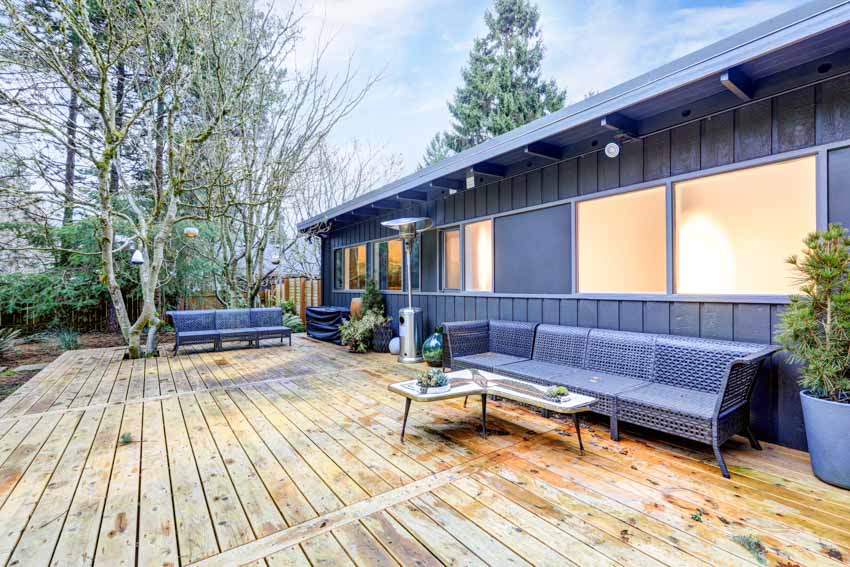
This material is also subjected to grading when they pass the lumber mill and this has been happening since 1960. It is usually inspected to take into account the quality and structure strength of the material, as well the possible existence of splits, knots, and other defects that can affect its quality in the long run.
These grades are often stamped on the lumber for the builders and engineers to easily see them. And these are the grades wood can be classified to.
1. Select Structural: Considered the highest grade based on the material’s durability and strength, it is ideal for all construction applications.
• 1 in 12-grain slope
• Have seasoning checks
• Tight and well-placed knots
• Knothole every 4′
• Splits not longer than the board
2. Construction Grade (Grade 1 Structural): Commonly referred to as #1, it is ideal for all residential construction areas, including siding, load bearing, trimming, posts, railing, shelving, furniture, and decking.
• Stronger than #2 and #3 grade lumbers
• 1 in 10 grain slope
• Well-spaced & tight knots
• 1 hole every 3′
• Splits not bigger than the plank’s width
3. Standard Grade (Grade 2 Structural): Most commonly known as #2, wood with this grade of lumber is more commonly used for joists, framing, trusses, lintels, beams, fencing, and rafters.
• More blemishes and knots than #1
• 1 in 8 grain slope
• May have visible bark edge/wane
• 1 hole every 2′
4. Utility Grade (Grade #3 Standard): Most commonly used for applications where they won’t be visible like framing and light construction, including braces, crates, pallets, packaging, and shipping purposes.
• Fewer restrictions on defects and knots
• Not as strong compared to other grades
• More wane, splits, and checks
• Well-spaced larger holes and knots
• 1 in 4-grain slope
Based On Retention Level
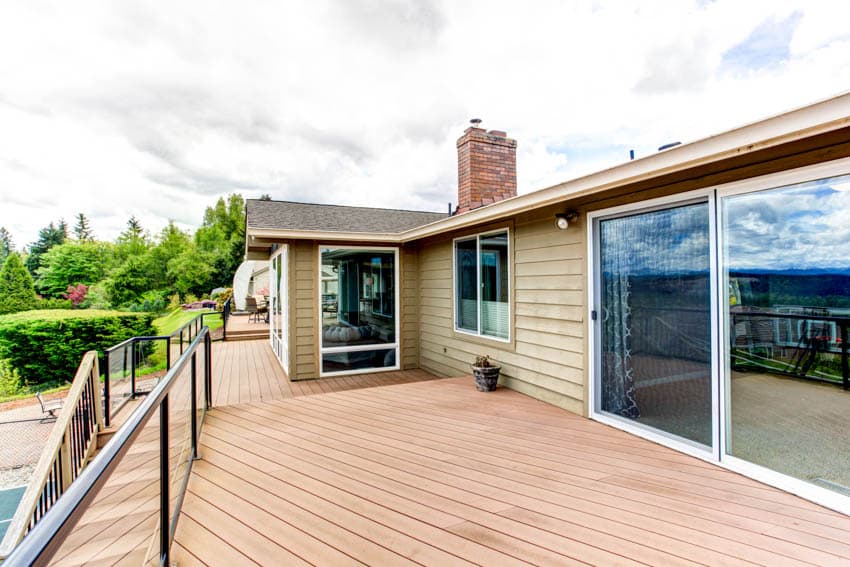
And lastly, this material is also classified based on its retention level or the amount of chemical preservative retained in the wood after treatment. From that factor, the levels will tell you how and where it can be used. You will usually see this classification stamped as a label for easier selection.
• Above Ground: This level can be used for exterior and above-the-ground projects. It is recommended to be used 6 inches and more above the ground.
• Ground Contact: It can be installed within 6 inches in contact with the ground (as well as grasses, foliage, and wet areas). It has poor air circulation and drainage and can be difficult to maintain and repair.
• In Ground Contact for Critical Use: With greater retention, this material with this level can be in the ground. Since it has retained much of the chemical preservatives in the treatment, it is better protected and so can be installed in areas with greater risk of severe environmental exposure and deterioration.
• Marine Grade: With significantly higher retention levels, this level is for pressure treated wood that can be installed in areas where the material will be submerged in water.
What Is The Best Pressure Treated Wood For Decks?
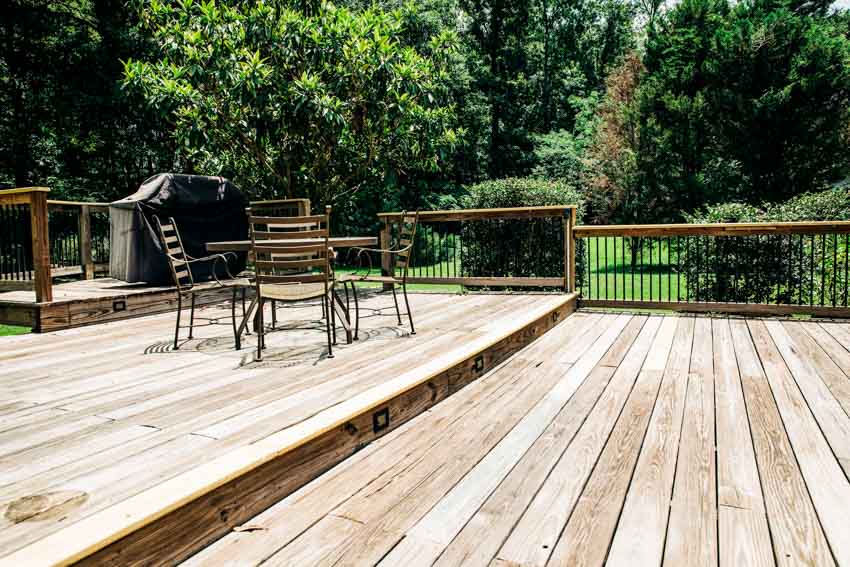
When choosing the best pressure treated wood, you need to go back to the different types and consider their price, and local availability. Looking at the treatment itself is a good way to find the best type. From the treatment, you will have to decide which one can benefit you the most.
With decks, the challenge lies with its exposure to outdoor elements that can cause rotting and damage. While choosing this material can pretty much solve that issue, you will also need to consider the one that retains the preservatives to have the optimum protection for your outdoor structure.
This means you can either go for Above Ground or Ground Contact for Critic Use since the material will be in constant exposure to elements that can cause deterioration and physical damage in the long run. And grades #1 or #2 are the recommended grades for the pressure treated wood.
Which Is Better #1 or #2 Pressure Treated Lumber?
When it comes to strength and durability, #1 is significantly better. While #2 also shows promising strength, it is still weaker than #1. Pressure treated lumber #1 also has more construction applications but both can be used for outdoor applications and load-bearing purposes.
When it comes to choosing a species the most popular used for pressure treated decks are douglas fir and southern yellow pine.
Pressure Treated Deck Pros And Cons

Building pressure treated wood deck designs have their advantages and disadvantages. This will only cement your decision on either to continue with the project or to choose another material to use.
Wood has always been a versatile material you can use both indoors and outdoors. But whether you can settle on the untreated type or would like to try it with pressure-treated ones, you can make a decision after skimming through these pros and cons.
Pros of Pressure Treated Decks

Going for this type of deck can promise you the following benefits to enjoy and make the most of:
• Cost-effective Option: Compared to other materials, this material is the more affordable option that can set you back around $15 to $20 per square foot.
• Durable: Considering its treatment, this material is structured to be very durable compared to other options. It can easily resist denting, scratches, and water damage that can lead to rotting.
• Long Lifespan: This material can last for up to 40 to 50 years with frequent and appropriate maintenance. Repairs are also affordable and easily accomplished.
• Insect Resistance: With the chemicals pumped into it, this material can deter insects, which helps prevent possible damage from beetles and termites.
Cons of Pressure Treated Decks
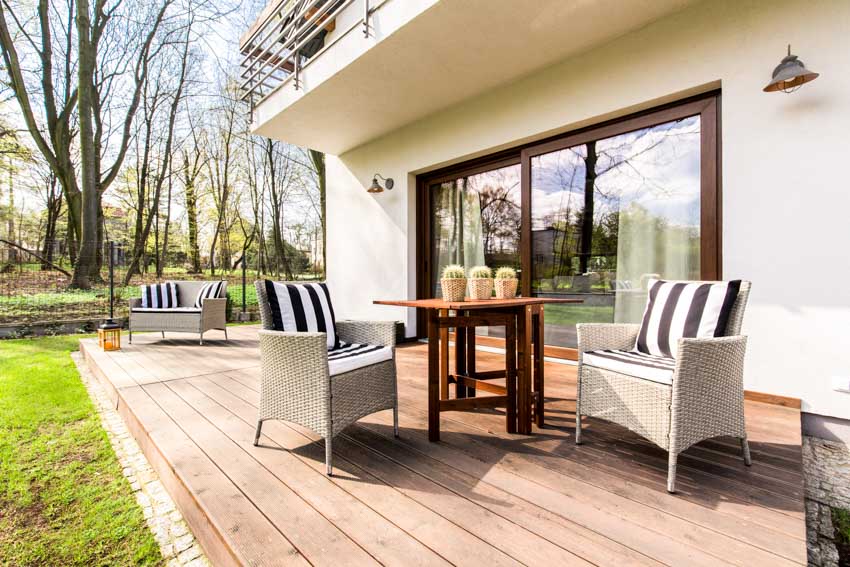
While this type of outdoor structure seems to be a good choice for you, it is important to consider the other side of the coin.
Here are the drawbacks you have to face once you choose this kind of outdoor structure.
• May be harmful: Since the material is embedded with synthetic chemicals, mishandling during the cutting and installation can be dangerous for you, especially if the wood contains copper that can run to soils and waterways. It also releases toxic chemicals when they are burned so make sure not to do this.
• Environmentally damaging: This is one of the major disadvantages of this material The chemicals used for the treatment are harmful to the environment, including ammonia which can negatively impact the environment.
• Wet lumber: When you purchase this material, it usually comes wet and green. It is also usually low quality so make sure to inspect as you purchase.
• Discoloration: Pressure treated wood needs to be stained or painted if you want to keep its color. The material, when exposed to direct sunlight (which will happen if you’re going to use it for decking), will change color and turn gray.
• High maintenance: It requires sealing and regular annual re-sealing to prevent it from fading, splintering, and worse, leaching the chemical treatment into your soil.
You will also need to pressure wash and stain the deck every 2 years. In estimate, you will have to spend around $250 per year just for its maintenance, which will be $7,500 in 30 years’ time (supposing your deck lasts that long).
• Checking: The wood is prone to splitting when moisture enters its pores, which is the reason why you need to seal it regularly.
How Long Does A Pressure Treated Wood Deck Last
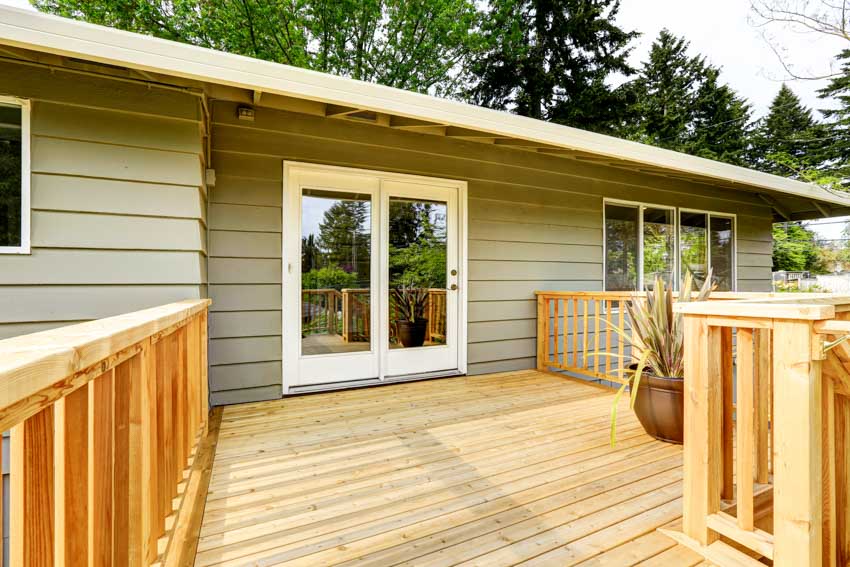
This type of deck has a long lifespan and can last 50 years with proper care and maintenance. Make sure to reseal and restrain the wood, as well as power wash the surface every 2 years.
And if you want your deck to last even longer, using among the appropriate types of canopy roofing over it will do the trick and save it from exposure to direct sunlight.
You can also level it up from the ground to lessen its exposure to moisture. Direct sunlight and moisture are two elements that can cause your deck to last shorter than you want it to.
Staining Pressure Treated Wood Deck
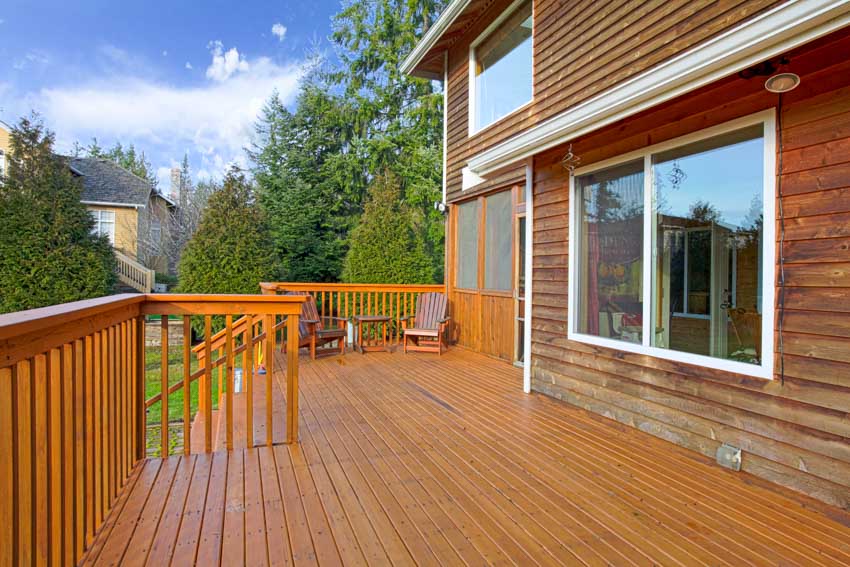
Staining a pressure treated wood deck is a must if you want to stray away from the gray hue it will turn to after some time. In fact, you should re-stain your deck every two years to maintain the original color you purchased.
But make sure that the deck is completely dry before staining the wood (especially after the pressure treatment) or it won’t stain as well as it should.
Deck Stain Colors On Pressure Treated Wood
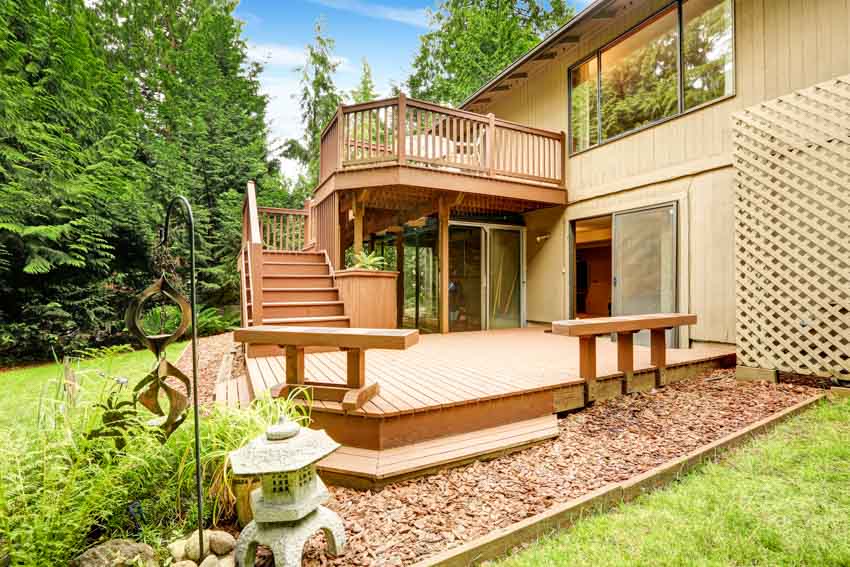
If you’re choosing stain colors to consider on your deck, here are some incredible options you can try:
• Dark Ash: This is a good choice if you’re looking for a light-colored stain that features a rustic-looking semi-transparent brown. It is a good starting place to consider especially since you can’t really start with something dark cause once you do, you can’t choose a lighter color again.
• Mountain Cedar: This is another light color you can get for your pressure treated deck, With a light sunny brown, mountain cedar decks have a touch of buttery yellow and red that create an ambiance of warmth and comfort. This stain will also help you appreciate the beauty of your deck’s wood grain.
• Dark Mahogany: If you’re going for something dark, go with this elegant rich brown color. More than just a rustic addition to your deck, it can enhance the aesthetics of your pressure treated wood without covering its grain.
How Long To Wait Before Staining Pressure Treated Wood Deck
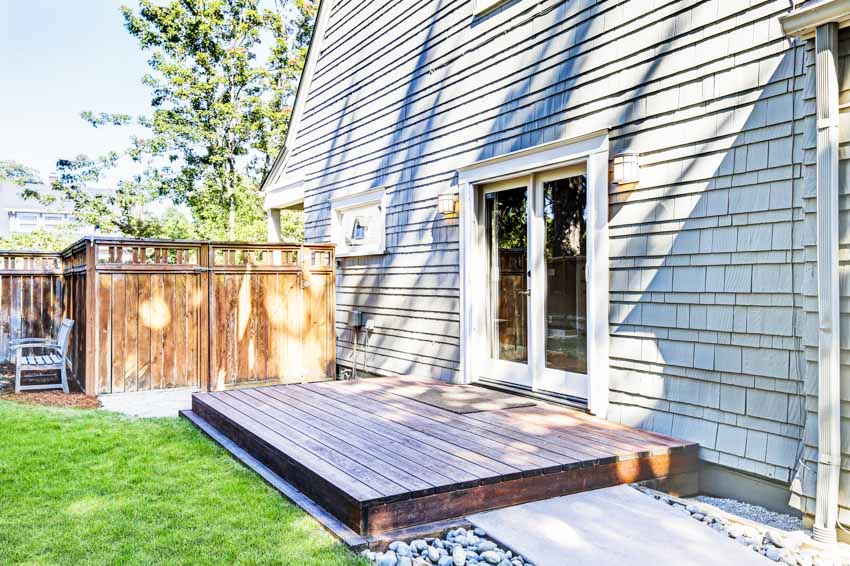
Before staining your wood, it is important to wait for a while after undergoing pressure treatment. The process will involve making the wood wet and so you need to allow it to be completely dry before staining it (and even sealing it).
The truth is that drying can take several months (at least 90 days) after the deck is treated and your deck is completed. The weather, time of the year, and the environment can affect how long it dries so make sure to check every now and test it.
Best Deck Stain For Pressure Treated Wood
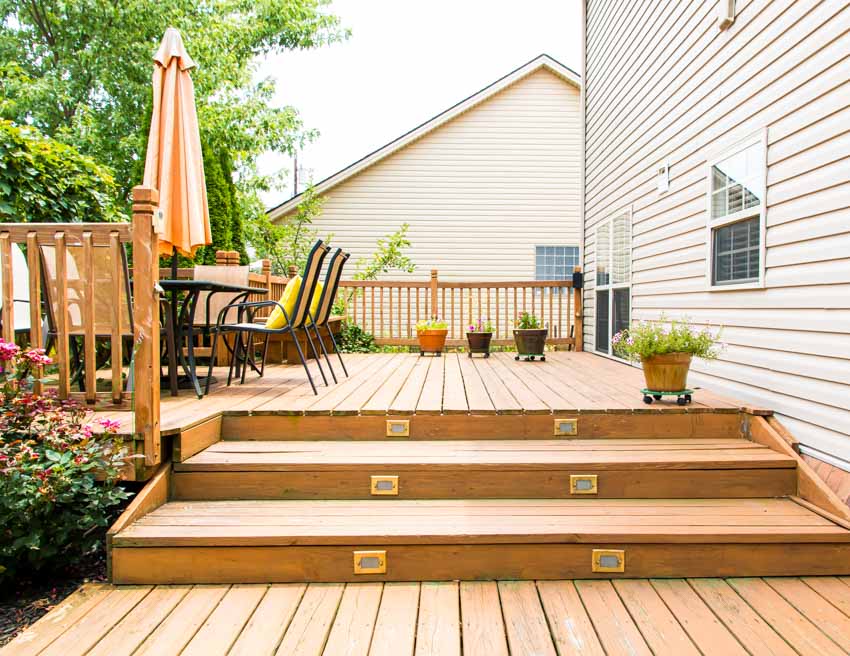
Choosing the right stain for your pressure treated wood is important in producing the right vibe you want your deck to have. If you chose poorly, you will definitely feel that effect once you spend some time on your deck.
Deck stains can come as oil-based or water-based, where the former has better penetration that allows the stain to last longer while the latter offers an easier cleanup process.
If you’re going for the best, choose a stain that also acts as a UV stabilizer and water repellant. This will be the ideal option for your deck.
Best Deck Paint For Pressure Treated Wood
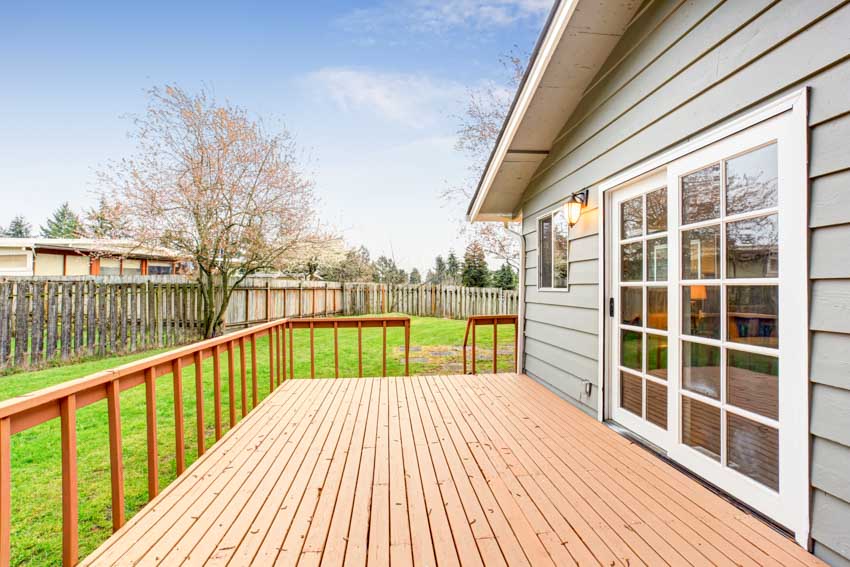
The big difference between choosing paint over stain is that you will cover the grain on your deck. If you’re choosing to paint over your deck, many options are up for grabs in the market. Here are some recommendations you can look into:
• Kilz Enamel Porch and Patio Latex Floor Paint: This option is very affordable yet at the same time resistant to cracking, fading, mildew buildup, and peeling. The downside though is that it’s only available in gray color.
• BEHR PREMIUM Porch and Patio Floor Paint: An incredible overall paint option with 100% acrylic that promises durability that can last for several years. You will have to make sure to remove old paint and apply a primer before painting the deck.
Best Deck Sealer For Pressure Treated Wood

Another requirement for your pressure treated wood deck is sealing so that it will be protected from elements that can cause damage to the wood like moisture, extreme temperature, and UV rays. The sealer can also give your deck a fresh-looking and smooth look.
If you’re not sure what sealer to choose for your deck, here are some incredible options to explore:
• Ready Seal Stain and Sealer for Wood
• Deck Premium Semi-transparent Water Based Deck Stain
• Seal-once Marine Penetrating Wood Sealer
• Thompson Waterseal Clear Waterproof Wood Protector
• DEFY Extreme Semi-transparent Exterior Wood Stain
Sanding Pressure Treated Wood Deck
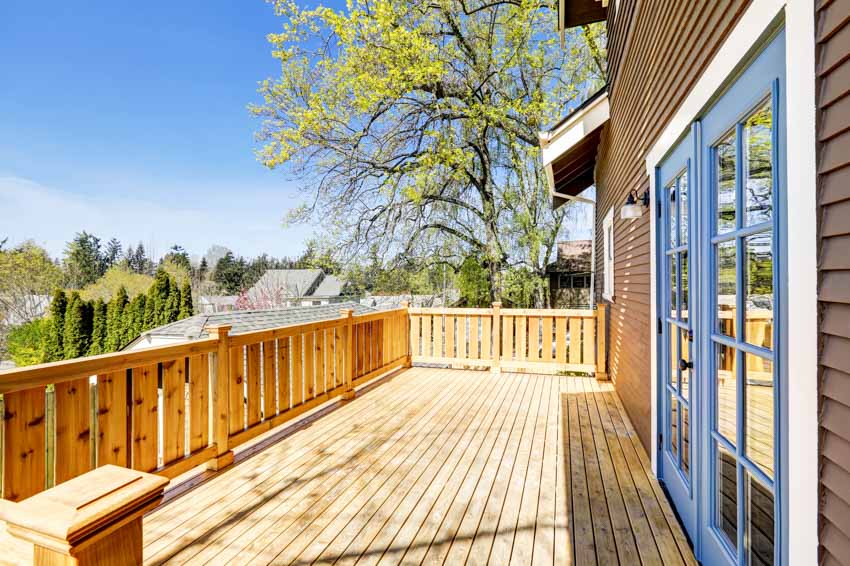
Do you need to sand your pressure treated wood deck? You will need to be very careful when it comes to sanding because you might end up removing the protecting coating from the pressure treatment, which will not be a good thing for your deck.
More than just leaving your deck bare without its protecting coating, sanding can also be harmful to your health since chemical leach can occur.
You can sand the deck but make the necessary precautions when you do it. And make sure to carefully sand it ust enough to ready it for sealing, staining, or painting.
Caring For Pressure Treated Wood Deck
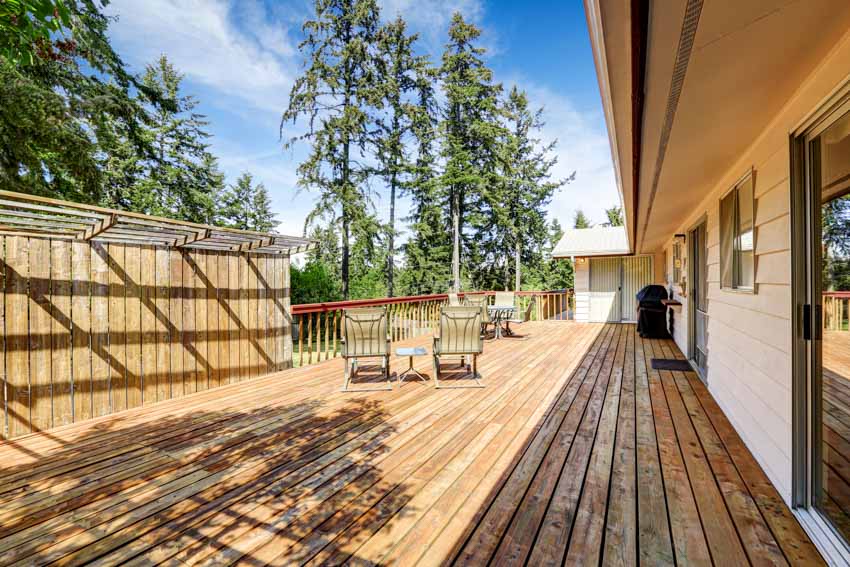
Proper care and maintenance of this deck type can help it last longer. Here are some of the tasks you need to undertake in caring for your deck:
1. Resealing (Once a year)
2. Re-staining (Every two to three years)
3. Re-painting (If you choose to paint the deck- whenever necessary)
4. Thorough cleaning (Once a month)
5. Sweep away puddled water, branches, leaves, and other debris (Regularly at routine intervals)
Cleaning Pressure Treated Wood Deck
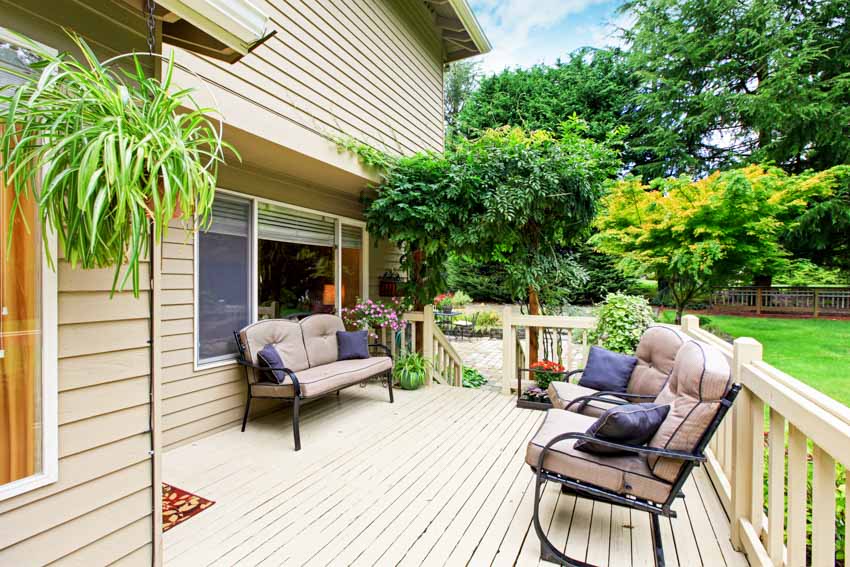
Cleaning this kind of deck needs to be thorough but careful. Schedule a regular cleanup and a more thorough yearly cleanup. The former involves sweeping on debris at routine intervals just to keep the deck clean.
You can use a broom and some water if you want to wipe the surface of the deck. The latter involves a more meticulous cleaning (which can be power washing if you choose it) and can be done once a year. Schedule it at the same time that you will need to re-seal or re-stain the deck.
Alternative To Pressure Treated Wood For Deck
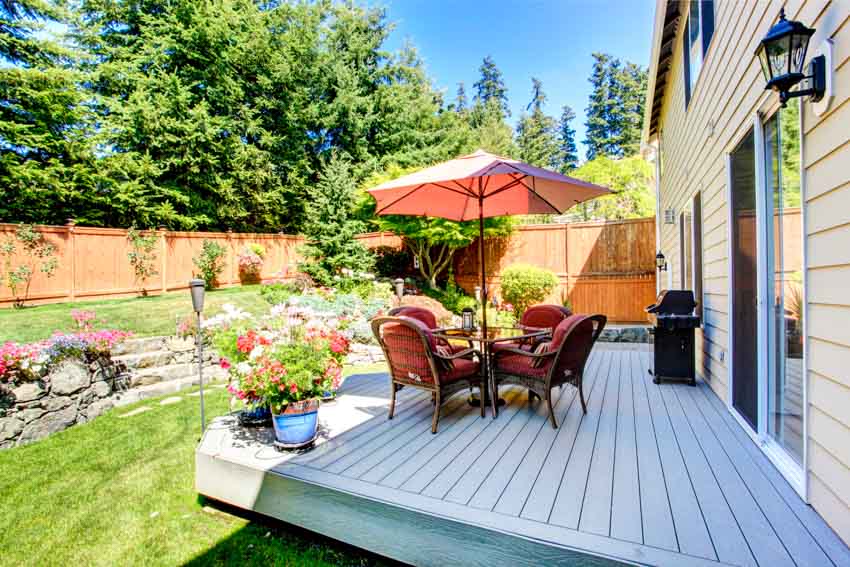
Pressure treated wood is not the only material you can use to build your deck. There are many more options to consider in the market.
If you’re a bit disturbed about the negative environmental impact that this material has and would like to have some alternatives to choose from for your deck, here are some recommendations:
• Aluminum
• Vinyl
• Composite (read more about composite decking here)
• Plastic Lumber
• Interlocking Deck Tiles
• Trex
See more related content in our article about deck design programs on this page.

